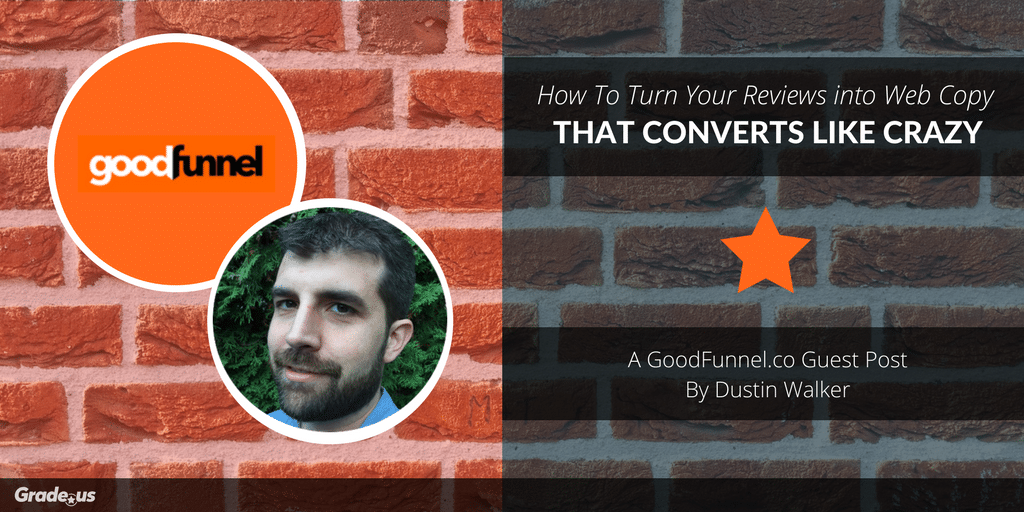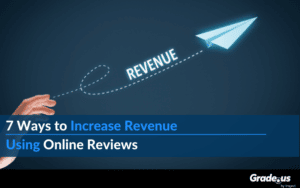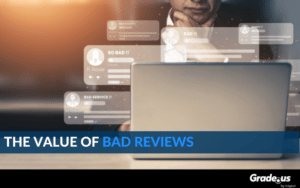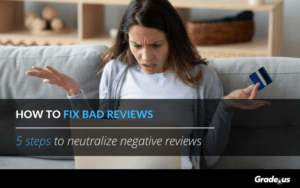Sometimes, the words just won’t come.
You’ve got a crucial email or landing page that you need to finish up ASAP, but you’re stumped on what to write.
And if you do manage to squeeze out a few words, they end up sounding dull, lifeless or cheesier than an ‘80s Coke commercial.
What’s the problem?
It could be that you’re trying too hard to create catchy headlines or subheads, rather than turning to the only people who can really help you pen a persuasive web page…
Your customers.
The words they use to describe your product (and the problem it solves) are far more compelling than anything a marketer or copywriter can come up with on their own.
And hidden within your customer reviews is a smorgasbord of words and phrases that can be ‘swiped’ and then used to write headlines, subject lines or crossheads that resonate with your target audience.
The trick is knowing what to look for.
I’ll to get that in a moment, but first you might be wondering….
‘Why do reviews work well as copy?’
Most visitors to your website have at least a basic understanding of what they want. So when they see language that reflects whatever they’re looking for, that copy is likely to connect with them in a meaningful way.
And by mirroring what prospects think and feel when they hit your website or read your emails, you’re able to build more trust, increase engagement and ultimately get more conversions.
Doing customer research, such as surveys and interviews, are also great ways to uncover customer-written-copy. But I recommend digging into your reviews first for two main reasons:
1) It’s often quicker & easier. No need to “bug” your customers by sending them a survey or hounding them for an interview.
2) You avoid certain research biases. This is a challenge for any type of qualitative research, but by mining reviews you don’t have to worry about things like asking a leading question that might skew their responses.
Let’s dive into how to actually uncover these high-converting bits of copy…
How To Spot Powerful Messages In Your Reviews
I suggest creating a table in Google docs and keeping track of four main things:
1) Sticky Language
The Heath Brothers, authors of Made To Stick, found that the most memorable messages follow what they call the SUCCESs model:
- Simple
- Unexpected
- Concrete
- Credible
- Emotional
- Stories
So when going through your reviews, take note of anything that feels ‘sticky’.
Do certain words or phrases convey powerful emotions? Do your customers use unexpected or interesting adjectives to describe your product?
And in particular, watch for sensory language or metaphors that paint a ‘word picture’ in the reader’s mind. Here’s what I mean by this:
A while back, I was writing copy for GyPSy Guide — a GPS-based app that plays audio tours while you’re on a road trip. After digging through their reviews on TripAdvisor and the App Store, one phrase kept popping up over and over again. Here’s an example:
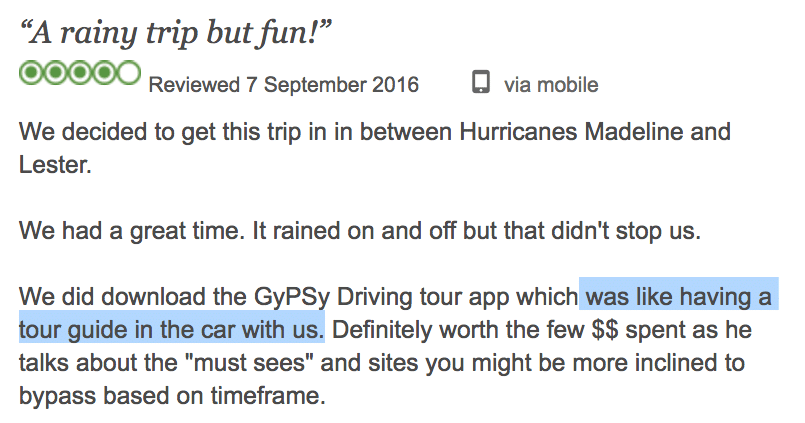
The line “it’s like a tour guide in your car” really jumped out at me.
Why?
Mainly because it uses a simile to explain the value GyPSy Guide provides. Similes and other metaphors create imagery in the reader’s mind, which makes your message more memorable.
So I swiped the phrase from the review and used it to write the hero copy for GyPSy Guide’s homepage:

That copy was part of an overall homepage revision that resulted in a 65% increase in conversions when A/B tested against the original. GyPSy Guide later trademarked the ‘like a tour tour in your car’ line and continue to use it heavily in their App Store description and other content.
So pay attention anytime your audience uses the phrase “it was like” or draws comparisons using “as” in their reviews. Those sticky similes might make for gripping copy.
2) What They Really Want
This all comes down to conveying benefits — in your customer’s words.
Pay attention to the exact language they use when describing the value they get from your product or how they use it. A single compelling phrase can make a huge difference.
Joanna Wiebe, of Copy Hackers, has written extensively about using ‘swiped’ phrases from customers as verbatim copy. And one of her best-known case studies involves ‘stealing’ from this testimonial…
“How are we using it? To eliminate 99% of our paper files!”
…in order to write this new homepage headline (which resulted in a 103% lift in conversions):
When digging through your own reviews, pay attention to specific benefits or descriptions of the value they get from your product. In particular, watch for phrases that begin with “I want…” or “I wanted…” — those could be signals that the line will work wonders as a headline or subhead.
And finally, keep an eye out for language that conveys the deeper benefits customers get from your product or service. Exactly how did it change their lives?
3) Triggers & Problems
Our brains tend to pay more attention to problems rather than solutions.
So if you’re able to precisely reflect your prospects’ problem or ‘pain’ on your website — using their language — those folks are going to gobble up what you have to say. This is part of the reason why the popular problem-agitate-solve copywriting formula works so well.
But it’s essential that you first understand what your audience’s dominant pain point is. Otherwise, your web copy will miss the mark.
So keep track of how often specific problems are mentioned in your reviews — especially ones that contain strong emotional language.
Here’s an example from a review for LivePlan, which is a popular business plan software platform:
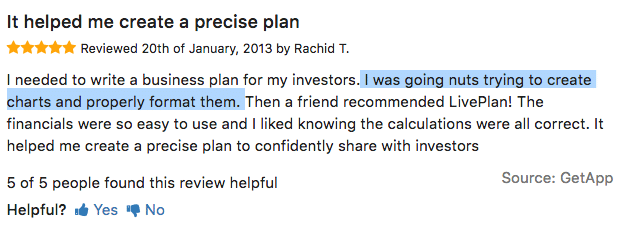
Building those charts wasn’t just a minor nuisance for this person — he was “going nuts” trying to create them. There’s emotion in that response.
Watching for these type of reviews will also give you clues about what type of messages to emphasize the most on your web pages.
4) Objections & Anxieties
This one’s a bit trickier.
Customers are less likely to mention (without being asked) what made them think twice about your product before converting. So unless you have a lot of reviews, you’re unlikely to dig up loads of objections.
But when you do find them, they can be copywriting gold! That’s because you now know what could be holding prospects back from converting — and can then create messaging to counter those barriers.
Here’s an example from GyPSy Guide that brings up ‘price’ as a potential objection:

But be careful not to give a single objection or anxiety too much weight. It could be an outlier. That’s why you may want to use these bits of VOC data to guide additional research, such as customer interviews or surveys, or to form A/B test hypotheses.
In conclusion…
I should make one thing clear: understanding the science of copywriting is essential for making your website, emails and landing pages more persuasive.
But anyone — regardless of their copy skills — can still improve their marketing content by mining reviews. Even if you just watch for the things I mentioned in this article.
Because the more you let the customer guide your marketing decisions, the better your conversion rates will be.
About the Author
Dustin Walker
Dustin Walker is a SaaS copywriter who specializes in helping companies nail their messaging through in-depth customer research. Check him out at CopyGuide.

